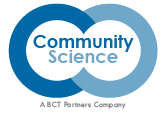So, what’s the best way to get people to buy and eat more fresh food? The Community Science team, led by Project Director Ricardo Millett, is working to find out by conducting a cluster evaluation of four healthy food incentive programs that provide Supplemental Nutrition Assistance Program (SNAP) recipients with incentives to shop at farmers’ markets. Formerly known as the federal Food Stamp Program, SNAP focuses on nutrition as much as benefits.
These food incentive programs – operated by Fair Food Network, Wholesome Wave, Market Umbrella, and Roots of Change – match SNAP recipients’ benefits at varying rates which ultimately enables recipients to purchase more fruit and vegetables than they would otherwise be able to afford.
“The cluster evaluation is a critical piece of being able to take a project that we are able to demonstrate is succeeding at the community level, and provide evidence to policy makers,” said Oran B. Hesterman, PhD., President and CEO of the Fair Food Network. “Then we can bring this community practice into play in the public policy arena.”
However, culling data from such different programs is a challenge. “Since these programs each have their own unique characteristics and goals,” Dr. Hesterman continued, “it creates a complexity that requires a more sophisticated cluster analysis-that’s why we turned to Community Science.”
The objective of Community Science’s cluster evaluation technique is to collect data from the markets, and surveys of market customers and vendors, to assess the extent to which the incentives are:
- Encouraging SNAP recipients to purchase and consume healthier foods
- Successfully being implemented at farmers’ markets according to market managers and vendors
- Providing benefits to farmers and the communities in which they operate
Support for the evaluation has been provided by the Kresge Foundation, Aetna Foundation, Kaiser Permanente, and the Centers for Disease Control and Prevention. (2011 – present)
